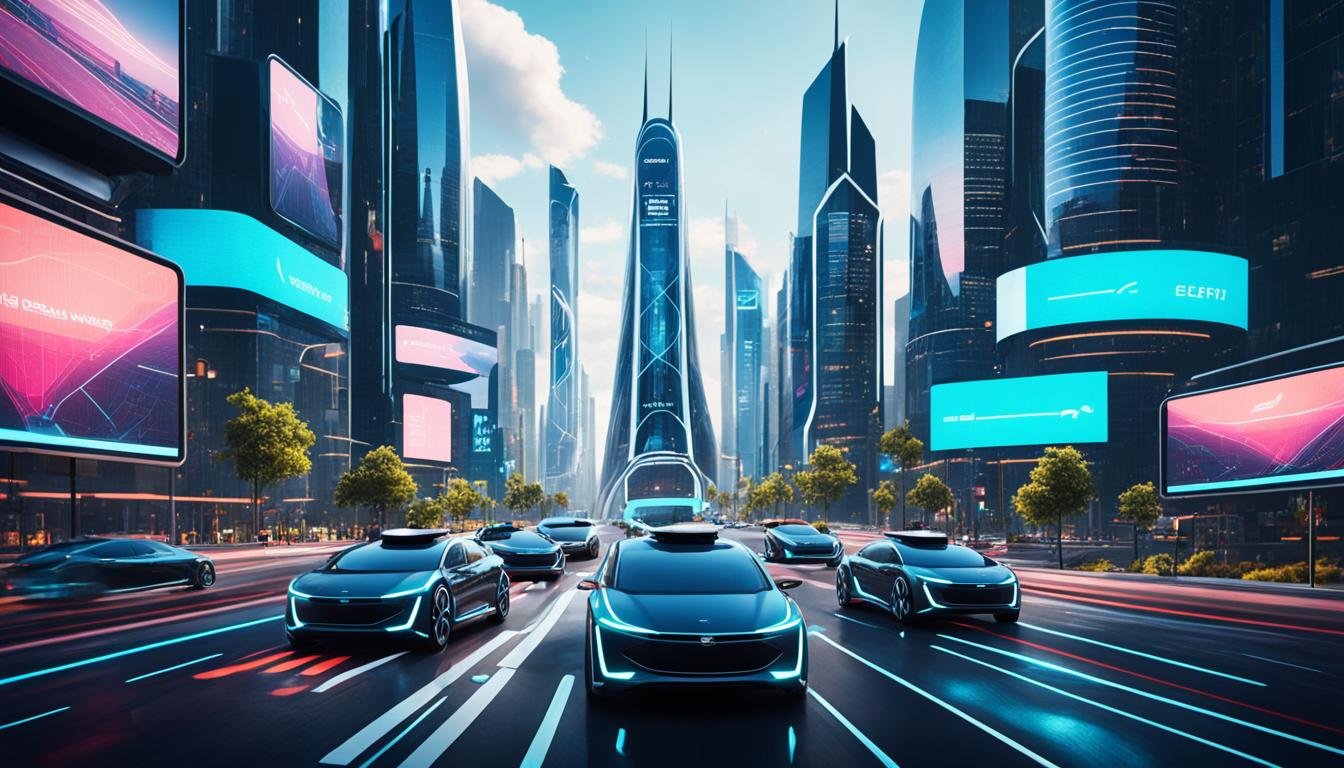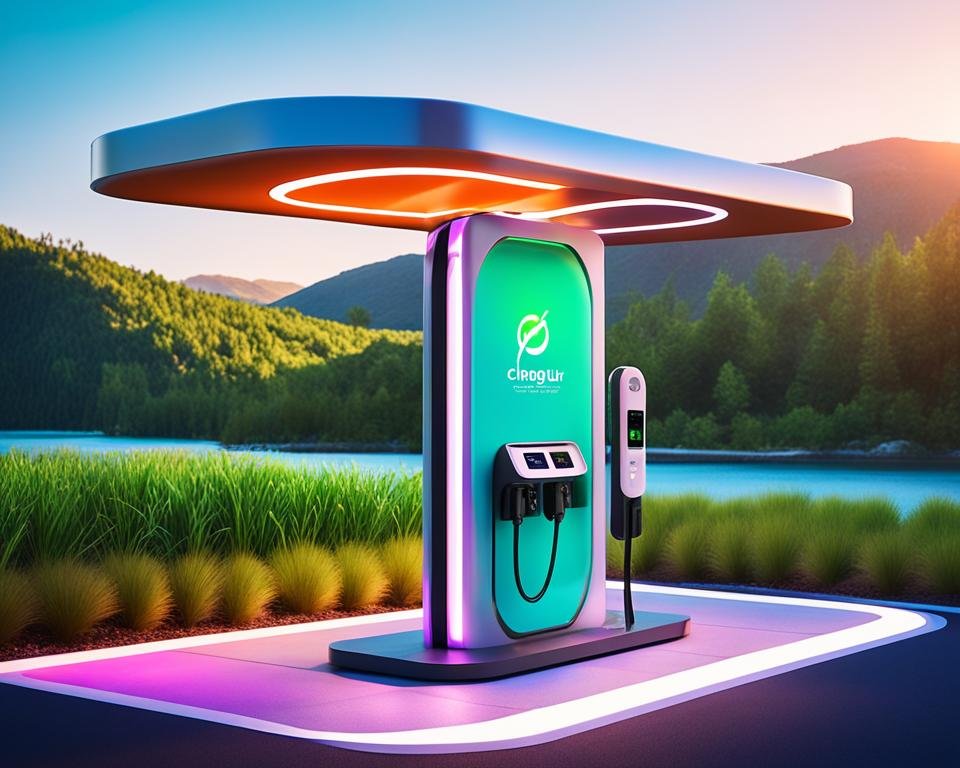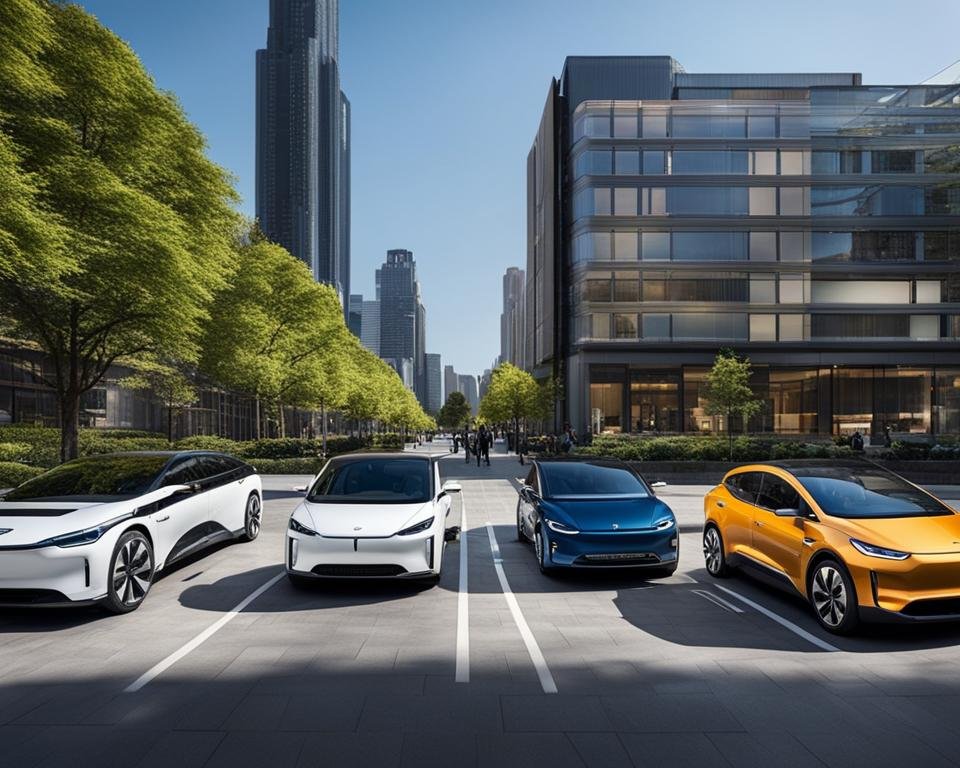The automotive industry is undergoing a transformation with the emergence of autonomous car technology. Self-driving cars, also known as autonomous vehicles or driverless cars, are set to revolutionise transportation. These vehicles utilise advanced technologies such as artificial intelligence, machine learning, computer vision, and sensors to navigate and make decisions on the road without human intervention. The development of autonomous car tech has the potential to reshape the way we move and interact with vehicles, offering numerous benefits and challenges along the way.
Key Takeaways:
- Autonomous car technology is transforming the automotive industry.
- Self-driving cars use advanced technologies like artificial intelligence and machine learning.
- Autonomous cars offer numerous benefits and challenges.
- They have the potential to revolutionise transportation.
- Autonomous car tech is reshaping the way we move and interact with vehicles.
Insights into Consumer Adoption of Electric Autonomous Vehicles
Consumer adoption of electric autonomous vehicles, or EVs, is influenced by various factors. One key driver is environmental awareness, as consumers increasingly prioritize sustainability and reducing their carbon footprint. As the global focus on climate change and environmental preservation intensifies, individuals are becoming more conscious of the impact of traditional combustion engine vehicles on the planet. The desire to contribute to a greener future is prompting consumers to explore electric and autonomous options.
Another crucial factor in consumer adoption is EV readiness. For individuals to embrace electric autonomous vehicles, a robust and accessible charging infrastructure is essential. Consumers need the confidence that they can conveniently charge their vehicles at home, work, or public charging stations. The expansion of charging infrastructure plays a vital role in making EV ownership more feasible and convenient for consumers.
Technological advancements in battery technology have also played a significant role in driving consumer interest in electric autonomous vehicles. Improved battery range and charging speed have alleviated concerns about limited driving distance and lengthy charging times. Battery technology advancements continue to enhance the performance and efficiency of EVs, making them more appealing to consumers.
Financial incentives and economic considerations are additional factors that influence consumer adoption of electric autonomous vehicles. Governments and organizations around the world are implementing various financial incentives to encourage the transition to EVs. These incentives include tax credits, rebates, and subsidies, which reduce the upfront costs of purchasing an electric or autonomous vehicle. Additionally, the overall cost of ownership for EVs is typically lower than that of traditional gas-powered cars, as they require less maintenance and have lower fuel costs. These economic benefits make electric autonomous vehicles an attractive option for cost-conscious consumers.
| Factors Influencing Consumer Adoption of Electric Autonomous Vehicles | Description |
|---|---|
| Environmental Awareness | Consumers prioritize sustainability and reducing their carbon footprint. |
| EV Readiness | The availability and accessibility of EV charging infrastructure. |
| Technological Advancements | Improved range and charging speed due to battery technology advancements. |
| Financial Incentives | Tax credits, rebates, and subsidies reduce the upfront costs of EV ownership. |
| Economic Considerations | Lower overall cost of ownership compared to traditional gas-powered cars. |
The Societal Benefits of Self-Driving Technology
Self-driving technology has the potential to bring significant societal benefits. One of the primary advantages is improved road safety since autonomous vehicles are not prone to human error. This can lead to a reduction in accidents and fatalities on the roads. Self-driving cars also have the potential to enhance mobility and access to transportation, particularly for individuals with disabilities or limited mobility. Furthermore, self-driving technology can optimize traffic flow, reduce congestion, and improve overall transportation efficiency, leading to time and fuel savings and reducing environmental impact.
To illustrate the positive societal impact of self-driving technology, consider the following examples:
- Improved Road Safety: With autonomous vehicles, human errors such as distracted driving, fatigue, and reckless behavior can be eliminated, resulting in safer roads for everyone.
- Enhanced Mobility: Self-driving cars can provide increased accessibility to transportation for individuals who are unable to drive due to physical disabilities or lack of driving skills.
- Traffic Optimization: Autonomous vehicles can communicate with each other and with transportation infrastructure to optimize traffic flow, reducing congestion and improving overall efficiency.
- Environmental Benefits: By optimizing routes and reducing idle time, self-driving cars can help reduce fuel consumption and greenhouse gas emissions, contributing to a more sustainable transportation system.
“Self-driving technology has the potential to bring significant societal benefits. One of the primary advantages is improved road safety since autonomous vehicles are not prone to human error.”
As self-driving technology continues to advance, society stands to benefit from increased safety, enhanced accessibility, and improved efficiency in transportation. With the potential to revolutionize mobility as we know it, self-driving vehicles hold the promise of a future where transportation is not only convenient but also sustainable and safe.
Integration of Autonomous Tech with Electric Propulsion
The automotive industry is witnessing a significant integration of autonomous technology with electric propulsion, leading to transformative advancements in electric vehicle (EV) technology. This integration holds immense potential for revolutionizing the future of transportation.
One key area of innovation is the progress in EV battery innovations. Advancements in battery chemistry and the development of solid-state batteries are extending the range and improving the efficiency of EVs. These breakthroughs are overcoming one of the major challenges faced by electric vehicles – limited range and long charging times.
Furthermore, the future of charging infrastructure for automated vehicles is a critical aspect to consider. The expansion of fast-charging networks and the emergence of wireless charging technologies are accelerating the adoption and feasibility of EV ownership. With convenient and readily available charging stations, EV owners can enjoy the benefits of electric propulsion without the worry of lengthy charging times.
The integration of autonomous technology with electric propulsion is contributing to the advancements in electric vehicle technology, opening up new possibilities for efficient and sustainable transportation. As the automotive industry moves forward, the synergy between autonomous tech and electric propulsion will continue to shape the way we travel, reducing carbon emissions and enhancing the overall driving experience.
| Integration of Autonomous Tech with Electric Propulsion | |
|---|---|
| Progress in EV Battery Innovations | Advancements in battery chemistry and solid-state batteries. |
| The Future of Charging Infrastructure for Automated Vehicles | Expansion of fast-charging networks and wireless charging technologies. |
| Advancements in Electric Vehicle Technology | Improved range, efficiency, and convenience of electric vehicles. |
Overcoming Autonomous Vehicles’ Safety and Regulation Challenges
Autonomous vehicles face numerous safety and regulation challenges that must be addressed to ensure their widespread adoption. As these vehicles become more prevalent on our roads, it is vital to establish robust safety standards and navigate the complex regulatory frameworks governing their operation.
Advancements in Safety Standards for Automated Driving
Advancements in safety standards play a crucial role in enhancing the reliability and safety of autonomous vehicles. Manufacturers and industry stakeholders are continuously improving the safety features and technologies integrated into these vehicles. From advanced driver assistance systems (ADAS) to collision avoidance and emergency braking systems, these advancements are aimed at mitigating potential risks and ensuring the well-being of passengers and other road users.
By setting and adhering to rigorous safety standards, the industry can build public trust in autonomous vehicles, ultimately paving the way for their widespread acceptance. Continuous research, testing, and evaluation of safety technologies are essential to address any gaps and meet the high safety expectations associated with autonomous driving.
Navigating Regulatory Frameworks for Self-Driving Cars
Regulatory frameworks for self-driving cars vary across regions and countries, presenting a unique challenge for the widespread adoption of autonomous vehicle technology. It is essential to navigate these frameworks to achieve regulatory clarity and establish consistent guidelines for the development, testing, and deployment of autonomous vehicles.
Collaboration between industry stakeholders, policymakers, and regulatory bodies is crucial to develop effective and comprehensive regulations that prioritize safety while fostering innovation and technological advancements. This collaboration should aim to address important issues such as liability, data privacy, cybersecurity, and ethical considerations.
By striking a balance between innovation and safety, regulatory frameworks can provide the necessary guidelines and standards to ensure the responsible and reliable integration of autonomous vehicles into our transportation systems.
| Challenges | Solutions |
|---|---|
| Ensuring passenger safety | Continuous advancements in safety technology and rigorous testing protocols |
| Robust cybersecurity measures | Encryption, secure communication protocols, and intrusion detection systems |
| Addressing liability concerns | Collaboration between industry stakeholders, regulators, and policymakers |
| Standardizing regulations | International cooperation and alignment of regulatory frameworks |
Infusing Artificial Intelligence in Autonomous Car Development
Artificial intelligence (AI) plays a central role in the development of autonomous cars. Through AI algorithms, self-driving capabilities are shaped, allowing vehicles to process sensor data in real-time and make decisions for safe and efficient navigation.
AI algorithms are the driving force behind the ability of self-driving cars to perceive and understand the environment around them. By analyzing data from various sensors such as cameras, lidar, and radar, AI algorithms enable autonomous cars to detect and classify objects, predict their behaviors, and plan appropriate actions.
Through continuous learning and adaptation, AI algorithms in self-driving cars continuously improve their performance. They learn from previous experiences and use that knowledge to make better decisions in different situations, resulting in safer and more efficient autonomous driving.
Machine learning, a subset of AI, is particularly valuable in analyzing traffic patterns and identifying trends. By analyzing large amounts of data on traffic flow, machine learning algorithms can recognize patterns and make predictions about future traffic conditions.
This capability is especially important in optimizing the performance of autonomous cars within complex traffic scenarios. Machine learning algorithms can analyze historical traffic data to identify the most efficient routes, predict congestion patterns, and adapt the driving strategy to minimize delays and optimize fuel consumption.
Overall, the infusion of artificial intelligence in autonomous car development is instrumental in shaping self-driving capabilities and ensuring safe and efficient navigation. By leveraging AI algorithms and machine learning techniques, autonomous vehicles are constantly improving their ability to navigate complex road environments and provide a safer and more convenient transportation experience for users.
Connectivity and V2X Communication: The Network of Automated Cars
Connectivity and V2X communication are essential components of the network of automated cars. V2X communication refers to the ability of vehicles to exchange information with other vehicles and infrastructure, enabling enhanced traffic efficiency and optimizing the overall driving experience.
Enhancing Traffic Efficiency through V2X
V2X communication plays a pivotal role in enhancing traffic efficiency. By sharing real-time information, vehicles can coordinate their movements, anticipate traffic conditions, and make informed decisions. This leads to smoother traffic flow, reduces congestion, and minimizes the chances of accidents and collisions. With V2X communication, vehicles can adapt to changing road conditions quickly, such as adjusting speed, changing lanes, or avoiding hazards.
For example, when a vehicle detects an upcoming road closure or an accident, it can relay this information to nearby vehicles through V2X communication. This allows other vehicles to reroute and avoid the affected area, preventing traffic congestion and ensuring faster and more efficient travel for all.
Furthermore, V2X communication can optimize traffic signals based on real-time traffic conditions. Traffic signals can intelligently adjust their timing to prioritize the smooth flow of traffic and minimize waiting times at intersections. This not only reduces congestion but also enhances fuel efficiency, as vehicles spend less time idling.
Vehicle-to-Grid (V2G) Technology and Energy Efficiency
Another significant application of connectivity in autonomous cars is vehicle-to-grid (V2G) technology. V2G technology allows autonomous vehicles to contribute back to the energy grid, enabling more sustainable energy practices and enhancing overall energy efficiency.
Autonomous vehicles equipped with V2G technology can utilize their batteries to store excess renewable energy generated from sources such as solar or wind. They can then feed this stored energy back into the grid during times of high demand or when renewable energy supply is low. This not only helps stabilize the power grid but also maximizes the utilization of renewable energy resources.
Furthermore, V2G technology enables vehicles to charge their batteries during off-peak hours, when electricity demand and costs are lower. This helps to balance the load on the grid and reduces the need for additional power generation during peak times, improving energy efficiency and reducing carbon emissions.
By integrating connectivity, V2X communication, and V2G technology, autonomous cars contribute towards a more connected, efficient, and sustainable transportation ecosystem.
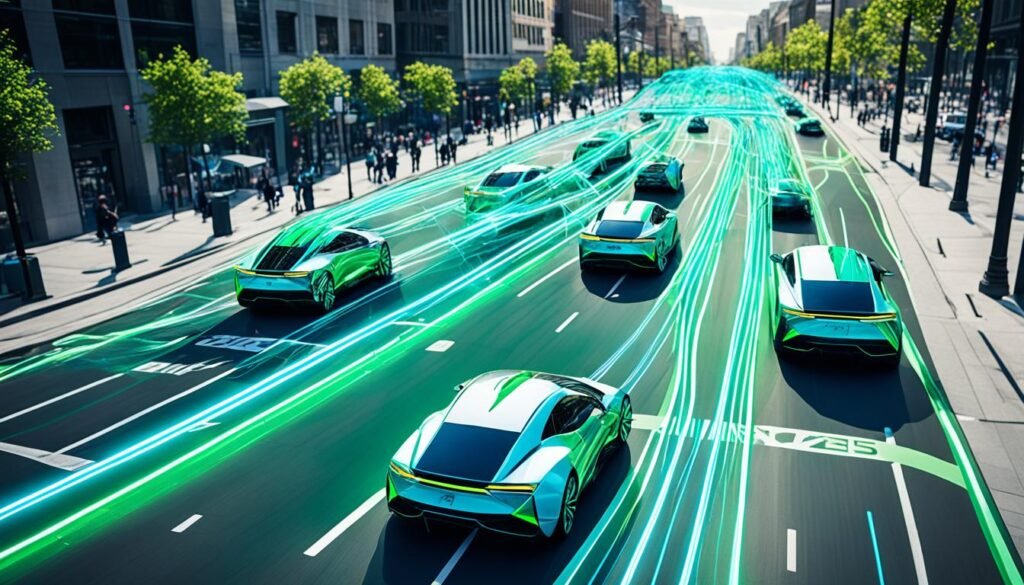
Assessing the Impact of Autonomous Cars on Consumer Behaviour
As autonomous cars continue to advance and become more prevalent, their impact on consumer behavior is becoming increasingly apparent. These innovative vehicles have the potential to bring about significant changes in the way people perceive and engage with transportation. Two major aspects affected by the rise of autonomous cars are ownership and mobility preferences as well as insurance and liability considerations.
The Shift in Ownership and Mobility Preferences
One notable shift resulting from the introduction of autonomous cars is the change in ownership and mobility preferences among consumers. Traditional car ownership may no longer be the primary choice, as individuals and communities start embracing shared mobility services and subscription-based vehicle access. This shift towards a sharing economy model allows people to enjoy the benefits of transportation without the burdens of full ownership. In this new landscape, autonomous cars become accessible to a broader range of individuals, promoting inclusivity and affordability.
Shared mobility services, such as ride-hailing platforms, enable users to request autonomous vehicles on-demand, eliminating the need for personal vehicle ownership. This change in ownership and mobility preferences not only reduces congestion on the roads but also contributes to more sustainable transportation practices. With autonomous cars, users can conveniently access transportation whenever needed, without the hassle of maintenance, parking, and other costs associated with owning a personal vehicle.
Insurance and Liability in the Era of Driverless Cars
With the advent of driverless cars, the landscape of insurance and liability is also evolving. As autonomous vehicles take on the responsibility of driving, the traditional framework of individual driver liability may no longer be applicable. Instead, the focus shifts towards the manufacturers and technology providers who develop and deploy the autonomous car systems.
Insurance companies, in collaboration with automakers and regulators, need to adapt their policies to account for the changing dynamics of autonomous car ownership and operation. With self-driving cars, the risks and liabilities associated with accidents and damages may shift from individual drivers to the technology companies behind the autonomous systems. This shift requires a comprehensive assessment of insurance coverage and the establishment of clear guidelines for determining liability in the event of accidents or malfunctions.
The integration of autonomous cars into the existing insurance framework necessitates collaboration between various stakeholders, such as insurance companies, car manufacturers, technology developers, and governmental entities. Together, these entities must develop new insurance models and regulatory frameworks that account for the unique characteristics and risks associated with autonomous vehicles.
| Impact of Autonomous Cars on Consumer Behavior | Key Considerations |
|---|---|
| The Shift in Ownership and Mobility Preferences |
|
| Insurance and Liability in the Era of Driverless Cars |
|
In summary, the impact of autonomous cars on consumer behavior is significant. The shift in ownership and mobility preferences towards shared mobility and subscription-based vehicle access redefines the concept of personal transportation. Additionally, insurance and liability considerations are being reshaped as the responsibility for accidents and damages potentially shifts from individual drivers to manufacturers or technology providers. As autonomous cars continue to shape the future of transportation, understanding and addressing these impacts are crucial for ensuring a smooth transition to a driverless future.
Revolutionising Vehicle Safety with Advanced Driver Assistance Systems
Advanced driver assistance systems (ADAS) are revolutionising vehicle safety. These systems, which include features such as automatic emergency braking, lane departure warning, and adaptive cruise control, enhance driver safety and help prevent accidents. ADAS technologies are continually advancing, incorporating AI and sensor technologies to provide real-time assistance and support to drivers, ultimately making roads safer for everyone.
Key Features of Advanced Driver Assistance Systems (ADAS)
1. Automatic Emergency Braking: ADAS can automatically apply the brakes if a potential collision is detected, helping to mitigate or prevent accidents.
2. Lane Departure Warning: ADAS systems can monitor lane markings and provide alerts to drivers if they drift out of their lane, reducing the risk of collisions.
3. Adaptive Cruise Control: ADAS can maintain a safe distance from the vehicle ahead by automatically adjusting the speed, enhancing safety on highways and in congested traffic.
4. Blind Spot Detection: ADAS can detect vehicles in blind spots and provide visual or auditory alerts to drivers, reducing the risk of lane-change collisions.
“Automotive safety has entered a new era with the introduction of advanced driver assistance systems. These technologies have the potential to save countless lives and prevent accidents by providing drivers with real-time support and assistance on the road.”
The Future of Advanced Driver Assistance Systems (ADAS)
As technology advances, ADAS is expected to become even more sophisticated, with the integration of AI and sensor technologies. These advancements will enhance the capabilities of ADAS systems, allowing them to detect and respond to a wider range of potential dangers on the road. Additionally, future ADAS technologies may incorporate features such as pedestrian detection, blind spot intervention, and traffic sign recognition, further improving driver safety.
With the ongoing development and refinement of ADAS, vehicle safety is poised for significant advancements, ultimately leading to a future where accidents and injuries on the road are greatly reduced.
| ADAS Feature | Benefits |
|---|---|
| Automatic Emergency Braking | – Reduces the risk of rear-end collisions – Provides additional safety in case of driver inattentiveness – Helps mitigate the severity of collisions |
| Lane Departure Warning | – Alerts drivers if they unintentionally drift out of their lane – Helps prevent accidents caused by lane drifting – Increases driver awareness and reduces the likelihood of lane-change collisions |
| Adaptive Cruise Control | – Maintains a safe distance from the vehicle ahead – Reduces driver fatigue and stress in congested traffic – Enhances highway driving safety |
| Blind Spot Detection | – Alerts drivers of vehicles in their blind spots – Improves lane-change safety – Reduces the risk of collisions caused by blind spot negligence |
Emerging Business Models in the Autonomous Car Market
The autonomous car market is experiencing a shift in business models as new opportunities emerge. One of the key developments is the rise of subscription-based vehicle access and shared mobility services. These models offer consumers flexibility and convenience in transportation options, allowing them to access vehicles without the commitment of traditional ownership. By subscribing to a service or sharing a vehicle with others, consumers can enjoy the benefits of autonomous cars without the burden of maintenance and depreciation costs.
This shift towards subscription-based vehicle access and shared mobility presents new revenue avenues for OEMs (original equipment manufacturers). Instead of relying solely on vehicle sales, OEMs can explore partnerships with mobility service providers and offer their vehicles for subscription or sharing platforms. This allows OEMs to generate revenue from usage fees and leverage their expertise in manufacturing and technology to meet the evolving demands of the market.
To adapt to these changing business models, OEMs need to develop strategies that align with the growing trends in the autonomous car market. This may include investing in technology and infrastructure to support subscription-based services, partnering with mobility service providers, and exploring new avenues for revenue generation, such as data monetization and value-added services.
By embracing emerging business models in the autonomous car market, OEMs can position themselves at the forefront of the industry and capitalize on the growing demand for subscription-based vehicle access and shared mobility services. These models not only cater to the evolving preferences of consumers but also provide opportunities for OEMs to diversify their revenue streams and build a sustainable business ecosystem.
Let’s take a closer look at the potential of subscription-based vehicle access and shared mobility in the autonomous car market:
“Subscription-based vehicle access and shared mobility services offer consumers flexibility and convenience in transportation options, allowing them to access vehicles without the commitment of traditional ownership.”
| Business Model | Description | Benefits |
|---|---|---|
| Subscription-based Vehicle Access | Consumers pay a monthly fee to access a fleet of autonomous vehicles |
|
| Shared Mobility Services | Consumers share autonomous vehicles with others for a specified duration |
|
The Role of Cybersecurity in the Age of Connected and Autonomous Vehicles
With the rise of connected and autonomous vehicles, cybersecurity plays a crucial role in ensuring the safety and integrity of these vehicles. Protecting autonomous vehicles from cyber threats is essential to prevent unauthorized access, data breaches, and potential risks to passenger safety. Robust cybersecurity measures, including encryption, secure communication protocols, and intrusion detection systems, are necessary to safeguard connected and autonomous vehicles from cyber attacks.
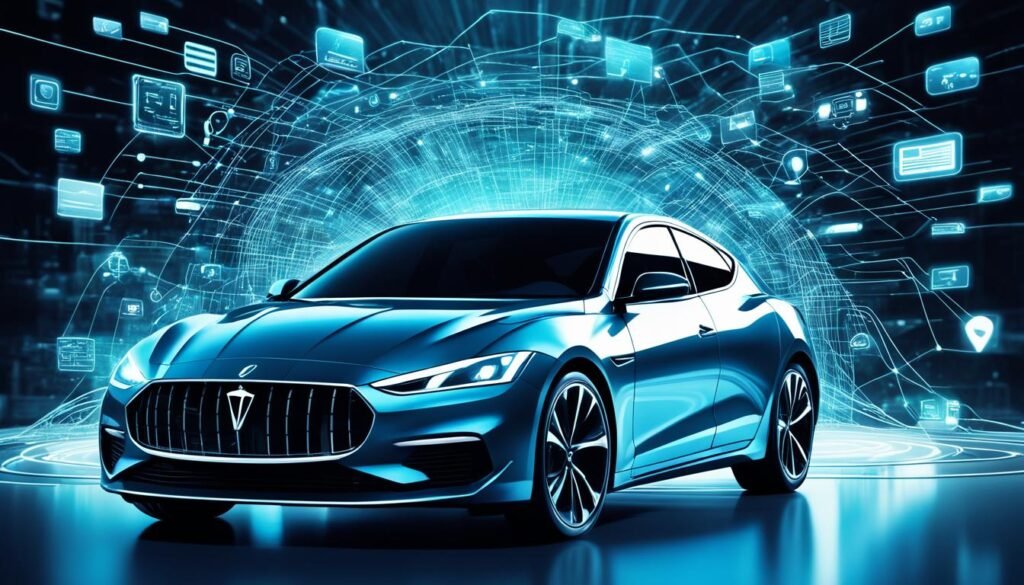
Autonomous and Self-Driving Cars: Bridging the Gap Between Technology and Practicality
Autonomous and self-driving cars are at the forefront of the automotive industry, bridging the gap between advanced technology and practicality. These vehicles aim to revolutionize transportation by harnessing the power of artificial intelligence and automation. However, the journey from assisted to fully automated driving is not without its challenges.
The Journey from Assisted to Fully Automated Driving
The development of self-driving cars has followed a progressive path, gradually increasing autonomy and reducing reliance on human input. It began with features like adaptive cruise control and lane-keeping assist, which provided assistance to drivers without taking full control of the vehicle. Over time, advancements in technology have enabled higher levels of autonomy, allowing cars to handle more complex driving tasks, such as navigating city streets and highways.
This journey from assisted to fully automated driving involves incremental improvements in autonomous capabilities and safety standards. It requires extensive testing, validation, and refinement to ensure the reliability and safety of autonomous vehicles in various real-world scenarios. Manufacturers and technology developers are continuously working towards achieving higher levels of autonomy, with the ultimate goal of fully self-driving cars that can operate in any situation without human intervention.
Public Perception and the Adoption Curve of Self-Driving Cars
Public perception plays a crucial role in the adoption of self-driving cars. Trust and confidence in autonomous technology are vital for its successful integration into everyday life. While there is a growing acceptance and curiosity about self-driving cars, there are also concerns and reservations that need to be addressed.
The adoption curve of autonomous vehicles follows a typical pattern, similar to other technological innovations. Early adopters embrace the new technology and serve as ambassadors, paving the way for mainstream acceptance. As more people experience the benefits of self-driving cars and witness their safety and efficiency, the adoption curve is expected to accelerate.
However, public perception can be influenced by factors such as media coverage, accidents involving autonomous vehicles, and cultural attitudes towards self-driving technology. It is essential for manufacturers and regulators to communicate the potential benefits, safety measures, and the overall positive impact of self-driving cars on society.
Public trust-building initiatives, effective education campaigns, and clear regulations are necessary to ensure a smooth transition to a future where self-driving cars are a common sight on our roads.
Disruptive Innovations: Robotics, AR, and 3D Printing in Auto Manufacturing
Auto manufacturing is undergoing a significant transformation with the adoption of disruptive innovations such as robotics, augmented reality (AR), and 3D printing. These technologies are revolutionizing the way vehicles are built, improving efficiency, precision, and safety in the manufacturing process.
Robotics and Automation in Vehicle Assembly
Robotics and automation have paved the way for advanced vehicle assembly processes. With the use of robotic arms and automated systems, manufacturers can streamline production, reduce manual labor, and ensure consistent quality across every stage of manufacturing. These advancements in robotics have not only increased efficiency but also enhanced workplace safety by minimizing human error and reducing the risk of accidents.
Augmented Reality and HUDs Enhancing Driver Experience
Augmented reality (AR) and heads-up displays (HUDs) are transforming the driver experience by providing real-time information and enhancing situational awareness. AR technology overlays digital information onto the driver’s field of view, offering vital navigation instructions, safety alerts, and other essential details. HUDs, on the other hand, project important information directly onto the windshield, allowing drivers to keep their eyes on the road while accessing crucial data. These technologies not only enhance safety but also provide a more intuitive and immersive driving experience.
3D Printing in Auto Manufacturing
3D printing has revolutionized auto manufacturing by enabling greater design flexibility, reducing waste, and accelerating the prototyping process. Additive manufacturing technology allows manufacturers to create complex parts and components with precision and efficiency. With 3D printing, the possibilities for design innovation are virtually limitless, leading to improved performance, reduced production costs, and faster time to market.
As these disruptive innovations continue to evolve, they will shape the future of auto manufacturing, driving further advancements in efficiency, sustainability, and customization.
Conclusion
In conclusion, the evolving landscape of autonomous car tech presents immense opportunities and challenges. The progress of autonomous vehicles is shaping the future of transportation, with the potential to revolutionize how we move and interact with vehicles. The integration of artificial intelligence, connectivity, and advanced technologies has paved the way for the development of self-driving cars, offering numerous benefits in terms of road safety, efficiency, and accessibility.
However, the journey towards autonomous cars is not without its challenges. Consumer adoption, societal acceptance, and regulatory frameworks continue to be key areas of focus. Collaboration between industry stakeholders, policymakers, and technology providers is crucial to address these challenges and ensure the successful integration of autonomous vehicle technology.
As we move forward, continuous innovation will be essential to enhance the capabilities of autonomous car tech. Advancements in areas such as AI algorithms, battery technology, and charging infrastructure will further optimize the performance and convenience of self-driving vehicles. Public acceptance and trust in autonomous technology are also vital factors, requiring effective communication and education to address any concerns or misconceptions.
The future of autonomous cars holds great promise. From reducing accidents and improving traffic efficiency to transforming mobility and creating new business models, autonomous vehicle technology has the potential to revolutionize the way we travel. By embracing this transformative technology and addressing its challenges, we can shape a future where autonomous cars become a safe, sustainable, and integral part of our transportation ecosystem.
FAQ
What are autonomous cars?
What factors influence consumer adoption of electric autonomous vehicles?
What are the benefits of self-driving technology?
How is autonomous technology integrated with electric propulsion?
What challenges do autonomous vehicles face in terms of safety and regulation?
What role does artificial intelligence play in autonomous car development?
What is the significance of connectivity and V2X communication in the network of automated cars?
How do autonomous cars impact consumer behaviour?
How do advanced driver assistance systems contribute to vehicle safety?
What are the emerging business models in the autonomous car market?
What role does cybersecurity play in the age of connected and autonomous vehicles?
How do autonomous and self-driving cars bridge the gap between technology and practicality?
What disruptive innovations are happening in the auto manufacturing industry?
Source Links
- https://www.compassintelligence.com/blog/the-evolving-landscape-of-electric-vehicles-autonomous-vehicles-and-vehicle-technology
- https://www.mckinsey.com/industries/automotive-and-assembly/our-insights/autonomous-drivings-future-convenient-and-connected
- https://aarautoglass.com/navigating-the-road-ahead-the-evolution-of-autonomous-vehicles/





